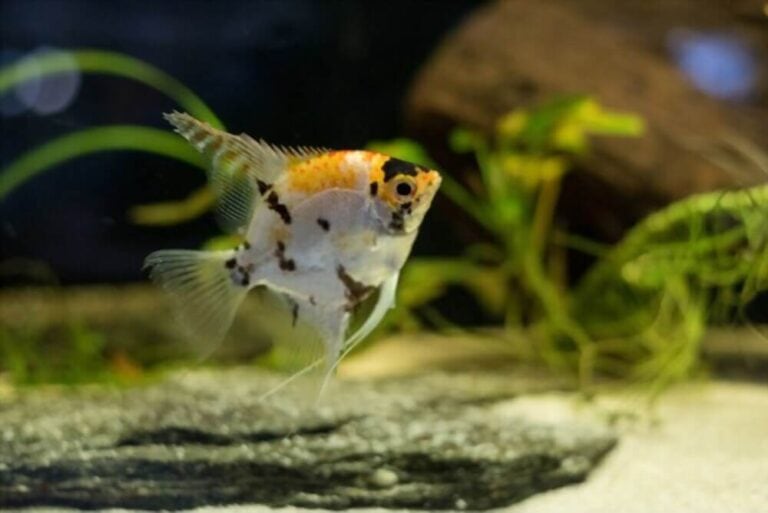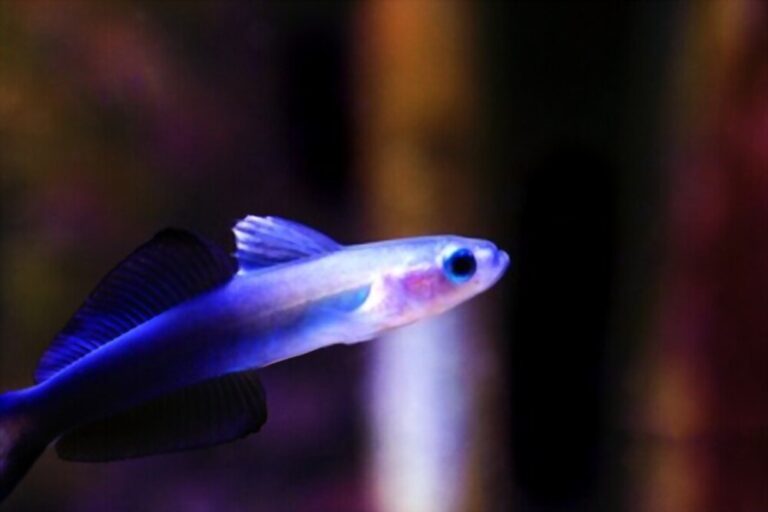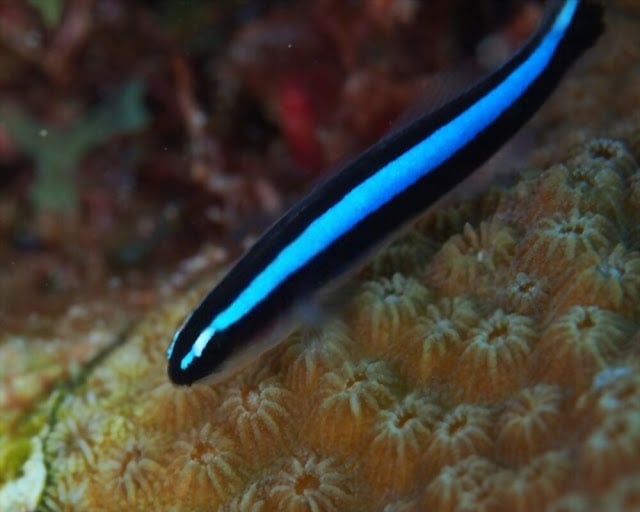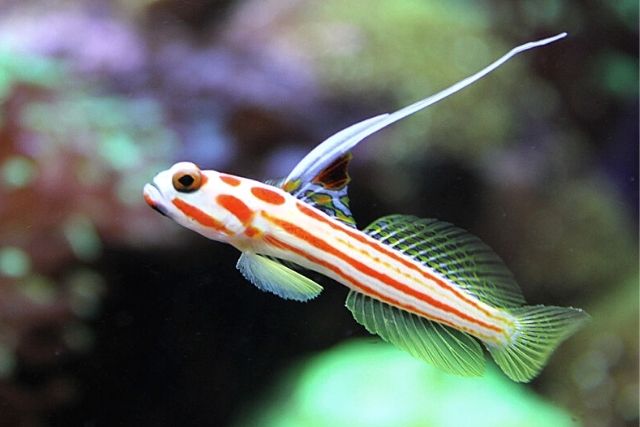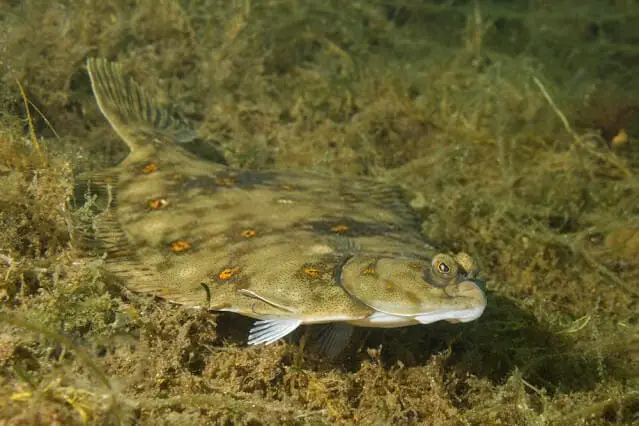Glofish Tetra (Care, Size, Lifespan, Behavior, Diet, Tank)
Glofish are genetically engineered fishes. As the name depicts, they have brilliant fluorescent colors.
They are nothing but glowing versions of naturally occurring wild varieties like Zebra danios, Rainbow sharks, Tiger barbs, Bettas, and Black skirt tetras.
The glofish tetras are pretty much easier to take care of just like their natural counterparts, making them one of the most popular glofish varieties in this business.
Glofish Tetra Size
Since there is no difference other than the body color between the natural black skirt tetra fish and its glofish variety, the size of the glofish tetra is also the same as its ancestral peer.
They are supposed to get 3 inches long. However, it is possible only if the aquarium conditions are maintained ideally. It also depends on the conditions of their previous home in a fish shop.
If you buy juveniles and maintain ideal tank conditions, they can reach their potential size of 3 inches in length.
Yet, most in aquariums, the glofish tetras measure an average of 2 inches or 2.5 inches, which has now been regarded as the average aquarium size.
The crowded or smaller tank is more likely to develop organic toxins. Which in turn affects the growth and normal functioning of your glofish.
Glo Tetras Appearance
They come in different fluorescent colors depending upon which color breed they are. However, the general appearance of these fish is the same as that of a black skirt tetra.
They have rounded foreheads with overall quadrilateral bodies. Their upper end is streamlined and curved, and the lower end turns pointed to the inside that meets the tail at the 2nd half portion.
They have very prominent fins adding to their overall glimmer. The dorsal fin is small and gives resemblance to a pointed square on the top. The tail fin is forked and gives more of a ‘V’ appearance. The anal fin covers the lower half of the body.
There are different striking colored variations of glofish tetra. These colors depict all seven colors of the rainbow.
If you have colored variations in your tank, they add to your tank’s brilliance, and it seems like a luminous decorative piece in your guest room.
All these variations look normal under white light, but they become luminous in the dark and under the influence of blue light.
Glofish Tetra Lifespan
The average lifespan of glofish tetra in aquariums is 3 years. However, it all depends upon the conditions and stability of the aquarium. With proper care and aquarium maintenance, you can even expect them to live up to 5 years.
The original wild variety can live up to 7 years in its natural habitat. However, that seems to be unattainable in home aquariums.
Because no matter how much you try to keep your aquarium maintained, you cannot substitute the same environment that they live in in the wild.
Glo Tetra Types
Glofish tetras are classified based on color variations. They come in almost all the colors of the rainbow, as discussed earlier. This whole package of different colors increases interest in this beautiful glofish variety and attracts more buyers in the trade.
Glo tetras are shoaling fish and are best to keep in groups of 5 or more. Just make a picture in your mind that you have every colored variety of glofish tetra shoaling around and laminating your setup with an appealing blend of sparkling colors. Isn’t that amazing?
Given below are all the possible colors that you might find out there.
- Electric Green
- Starfire Red
- Sunburst Orange
- Electric Green
- Galactic Purple
- Cosmic blue
- Moonrise pink
- Long-fin Electric Green
- Long-fin Sunburst Orange
Glofish Tetra Behavior
Glofish tetra is a peaceful fish and, they like to live in a shoaling group of 5 or more. A single specimen is prone to become stressed and limits itself to isolation.
Therefore, it’s best and necessary to keep them in groups. As far as their behavior is concerned, they are peaceful and make excellent tank mates with other small fishes.
However, they are semi-aggressive to the long-finned fishes, provided that they are slow, not so large, and aggressive. The long fins trigger their nipping instinct.
If the female in a group of 2 or more males shows off the signs of spawning, that also triggers their intergroup aggression, and every male tends to pair up with the female.
At this point, you should separate the female into another setup, and you can introduce the male later if you want to breed glofish. Otherwise, the glofish tetras are peaceful and have made their names stand out in the list of community fishes.
Glofish Tetra Care
Caring for glofish tetra means providing them with all the necessary conditions required for their well-being.
The first thing you should remember is that they are shoaling fish, and there is no way you can expect a single specimen to be happy, healthy, and stress-free in your tank. So, keeping them in groups is the first and foremost thing in caring for glofish tetra.
After they have been introduced in your aquarium, keep a check on the water parameters of the tanks like temperature, pH, and levels of nitrates because all these parameters ensure your colorful acquisition’s overall behavior and well-being.
So, do not make any mistakes because you are responsible for your own aquarium.
Feeding Glofish Tetra
When it comes to feeding, the glofish tetra is not very choosy, and they would readily take up anything given to them. However, that’s not the ideal case scenario.
If you want your fish to be healthy and happy, you need to balance the diet in such a way that can be helpful for your fish nutritionally.
The glofish tetra is omnivorous, which means their nutritional requirements need a variety of supplementation to be given as a part of their everyday diet. This brings us to the question written below.
What actually glofish tetra needs to be fed?
Okay! Let’s cut it to the chase. Live foods are an important and ultimate source of the protein component of a glofish diet, which includes a variety of insects, crustaceans, and bloodworms. But we don’t recommend these to be given every day.
Live foods are just fine for your glofish tetra if they are given 2 to 3 times a week. We strongly recommend that a staple of the diet for your glowing tetras is a blend of flakes and frozen foods.
However, flakes alone have the potential to be used as the main dietary staple for your glofish.
Let me put that all together in a simpler way.
- Flakes and pellets with some frozen diet (every day)
- Veggies (Occasionally)
- Live foods (Occasionally, max 3 times a week)
How often should you feed glofish tetra?
They aren’t massive fish, and any amount of food they can finish off within 2 minutes is sufficient. That’s the amount of food, and we need to balance it with the number of feedings. For glofish tetra, feeding twice a day is more than enough.
Many novice aquarists tend to overfeed their glowing beauties. They might indulge in the thinking that feeding would increase the glow and brightness of their acquisition.
So, let me make it clear to you, you may end up losing your fish instead of increasing its glow. If you continue to do so, I may sound poetic, but it is an undisputed fact. Overfeeding is the major killer for all aquarium fishes, which cannot be overlooked anyway.
Temperature for Glo Tetra
If we look at the origin of the wild counterpart of glofish tetra, we come to know that they naturally inhabit the freshwaters of South America.
The water bodies in South America are slightly acidic and warm, which means the temperature is another important parameter for the thrival and survival of the glofish tetra.
The suggested temperature range to be maintained for the glofish tetra tank is 70-85 degrees Fahrenheit. However, it is best to maintain a temperature somewhere in the middle of this range instead of extremities.
Though the given range is safe, from the lower extremity to the upper extremity, expert hobbyists always suggest keeping things moderate.
Temperature affects the glofish tetra in many ways. The most important are metabolism and breeding. Breeding requires higher levels of the suggested temperature range, so when spawning is required, maintain the temperature a little higher than what you usually keep.
Glofish Tetra Tank Size
As we have discussed earlier, these are shoaling fishes, and it is not possible to house a single specimen of the glowing tetra in the tank as it would freak out of stress.
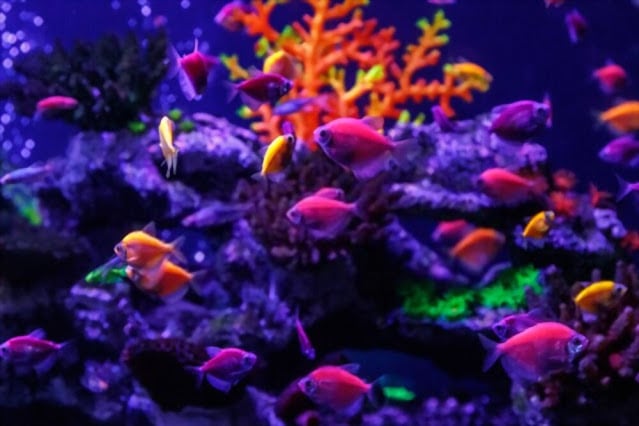
The general rule of thumb says that 3 gallons of the tank per glofish are minimally suitable. Following this rule, the minimum tank size for a shoal of 5 glofish tetras is 15 gallons.
Only when this is the only fish that you are going to keep. Choose the size of the tank accordingly for housing your glofish in a community tank.
Tank Setup for Glofish Tetras
As far as the setup of the tank is concerned, it’s not a big deal. You need to understand the environment better about this fish’s natural living ancestor lives in the wild.
So with that being said, let’s keep it short and simple. The tank for glofish tetra should be set so that after accommodating the vegetation, decoration, and other equipment, there must be enough space left for the group of glofish to shoal at ease.
Like submerged plants, the vegetation replicates for their home in the wild, where they seek protection and shelter. The wooden lodges would also serve the same purpose.
For the substrate, fine-grain pool filtration sand would be best. The caution to be taken is concerned with the top of the tank, though. It needs a tight-fitting lid to avoid jumping out of these fish as they are known as strong jumpers.
Glofish Tetra Tank Mates
Choosing the right tankmates for the glofish tetra requires a better understanding of their social behavior, as it is the key to an ideal environment that your glowing beauties deserve.
The glofish tetras are peaceful until and unless the long fins of their tankmates attract them. Yes, you heard it right. They are known for their fin nipping tendencies when kept with long-finned peaceful fishes.
The glofish tetras are placed in the semi-aggressive category because of their fin nipping attribute.
Large semi-aggressive, aggressive, and any other fish which is big enough to hunt down the glofish tetra can never make up with the tank mates with your glofish tetra, so be careful in selecting their tankmates.
Here is the list of a few fishes that make up good tankmates for your shoal of glofish tetra
- Cardinal Tetras
- Rasboras
- Plecos
- Tiger Barbs
- Danios
- Neon Tetras
- Dwarf Cichlids
- Black neon tetra
- Dwarf Gourami
- Honey Gourami
Breeding Glofish Tetra
There is no particular sexual dimorphism in the Glofish tetra because both the males and the females look similar.
But suppose you have maintained your aquarium’s conditions at the optimum level, and your aquarium is going well. In that case, there is a high possibility that the shoal’s female glofish will be triggered to spawn.
The spawning signs can easily be indicated because the female’s belly gets enlarged, and the males tend to pair off with the female, which would leads to a little bit of aggression between them.
At this point, it’s better to separate the breeding pair from the shoal. The temperature should be maintained at 78 degrees Fahrenheit which are considered an ideal spawning temperature for them.
Now it is the female’s turn to indicate the spawning spot where it will lay the eggs after 2 to 3 days of showing the signs.
They will release the eggs into the water, and males will fertilize them as they fall into the bottom of the tank. Separate the pair from the tank once eggs are fertilized because they tend to eat their eggs.
Glofish tetra male or female (How to determine?)
It’s pretty hard to differentiate between the male and female glofish tetra as both share similar physical characteristics.
There is no such particular sexual dimorphism in them that could tell them apart. You can only identify their sexuality when they get matured. Upon reaching maturity, the females will have broader, deeper bodies, and the males will be more slender and smaller.
Normally it’s hard to separate them as males or females. So maybe you have to wait until they show spawning signs. During spawning, the female abdomen gets enlarged as if it is pregnant, and you can easily differentiate the sexes at this point.
Summary
Our topic of concern here is the Glofish tetra, which is the most popular after the glofish zebra. The black skirt tetra of the Characidae family was manipulated to create the glofish tetra variety, which is a little larger than glofish zebras.
They are found in aquariums all over the world with their different luminescent colors. Let me make this clear to you, the colors of these fishes are not injected, nor are they painted.
Instead, the color genes were inserted in them at the simple embryonic stages, which later passed on through sexual breeding, and these colorful fishes became fixed forms of their wild counterparts.
FAQs
What is the best food for glofish?
Being omnivorous, glofish need variety in their diet. That variety comes from balancing all the essential nutrients in such a way that your glofish takes the best out of staples and Occasional feedings.
You might wonder what the best diet for glofish is for these omnivores that can be used as their dietary staple. Well, flakes alone have enough nutrition that they can be given as everyday feeding.
There are even special flakes out there in the market that enhance the brightness of these fluorescent fish. Following the pattern listed below may serve well the purpose of a balanced diet that your glofish needs
- Flakes (Glofish special color flakes are also included)
- Bloodworms (live as well as freeze-dried)
- Brine shrimp (2-3 times a week)
- Sinking pellets
- Other frozen meaty foods
- Veggies
- Algae wafers (Occasionally as a part of plant diet).
Why do glofish die so fast?
Now there are two scenarios of glofish dying unexpectedly in aquariums. The first one is a glofish dying in an already established tank after living a considerable amount of time in the tank. The reason here might be overfeeding. We don’t intend to discuss overfeeding here.
The other scenario of glofish dying so fast is improper acclimatization. If you fail at acclimatizing your glofish in a new aquarium, the result could be the death of your glofish. A tank without an established nitrogen cycle can kill your glofish.
Why is my glofish not eating?
The reason is obvious that your fish is under stress. Now the stress may occur due to several reasons. Glofish is stressed when it is housed with the tankmates, more aggressive, and quickly approaching the food or overfeeding it.
The first condition is easy to judge, and you have to separate your glofish and place them in a tank with the tankmates of compatible behavior.
The second condition is pretty much dangerous as well as our point of interest right here. An overfed fish is more likely to reject the food. Overfeeding can easily be spotted by checking the water parameters as well.
So, if we wrap it all up, overfeeding is the main reason for glofish not accepting the food and a killer cause of your beautiful sparkling fish as well.
Are GloFish Tetras aggressive?
Glofish tetras are semi-aggressive to the long-finned fishes, provided that they are slow, not so large, and aggressive. The long fins trigger their nipping instinct.
If the female in a group of 2 or more males shows off the signs of spawning, that also triggers their intergroup aggression, and every male tends to pair up with the female.
How long do Tetra GloFish live?
The average lifespan of glofish tetra in aquariums is 3 years. However, it all depends upon the conditions and stability of the aquarium. With proper care and aquarium maintenance, you can even expect them to live up to 5 years.
Can Tetra GloFish have babies?
Yes! Glofish tetras can have babies. Same as other fishes, they do have a breeding process, and females produce eggs.
Related Posts





